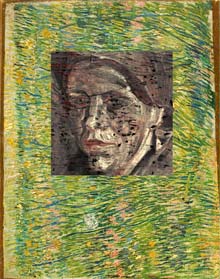Feng Shui ( pronounced fong sway ) is an ancient science based on the belief that everything in the universe is either positive or negative energy. ( Yin and Yang ) This energy is called Chi, and the science/art of Feng Shui is the use and arrangement of positive objects to counteract the negative objects in your environment. It has been practiced for thousands of years in China. The Forbidden City was the largest Feng Shui project ever constructed. Every detail of the palace complex was studied and approved by the finest Feng Shui priests of the time. In fact, because there was no mountain behind the palace, they built one.
All over the world there has been a boom in interest in feng shui and contrary to popular belief, the application of feng shui need not be oriental. Traditional people all over the world have observed, recorded and reached an understanding of the ways in which different places and homes affect one’s well being and fortune.
Urban life everywhere, and particularly in the West, has become a remote controlled, instant food and push-button society. As a result we have become alien to the natural world, thereby exposing ourselves to increasing levels of toxicity, pollution and cramped living environments Feng shui is all about movement of energy and balance. The underlying principle of feng shui is that everything in your overall and immediate surroundings which can be as basic as the smallest details of furnishing and decor, can either work in favor of your well being and your aims and goals, or go against you.
The human body is a measure of all things in the Universe. A structure cannot be put up without a plan or design. The importance of aligning rooms and corners, and applying calculations that will be in harmony with nature, is the fundamental concept of feng shui.
There are subtle currents of energy called ‘Chi’ which flows through our body and through everything in the universe. If we understand the Chi, we can arrange our living and working environments to help us to achieve our goals.
However we should bear in mind the fact that energy is not just about aligning the space and place of dwelling. It also relates to the energy of the individual. This is referred to as the “inner feng shui.” It goes without saying that it is vital to maintain the food energy balance for healthy living.
The character Chi represents the fundamental energy of the Universe. We are all born with plentiful supply of Chi, but as we grow, it is used up. It needs to be restored and the source of that essential replenishment is food.
In today’s era in which everything is just whirl and go, everyone has become obsessed with speed. Most people view food as a mere facility and that is why so many people suffer from digestion problems. A cook needs basic elements like Water, Fire, Air, Metal and Earth. The earth is the basic platform on which nearly all activities take place, and this includes cooking as well. Any contemporary kitchen consists or must consist of the same five fundamental elements. The best feng shui advice is to prepare and cook food in a room that is separated from the rest of the living space. Chinese cooking methods range across a spectrum that embraces the polar energies of Yin and Yang. When we classify food further on the basis of their preparations, we get Yin food and Yang food.
Plants and the position in which they are placed contribute to the positive feel of any space. In feng shui, plants have an important role. It is said that they bring life force or Prana into the home and keep the air clean. Plants should be strong and healthy. Sick plants and plants which shed their leaves profusely should be avoided. The energy in the plants varies depending on its shape and size. Upright plants with slightly pointed leaves are considered ‘yang’ and are generally used in the South Corners and in narrow areas to move the energy.
Round leaves and drooping leaves are used to calm down strong energy and are preferred for the North Corners.
When we arrange our rooms and space, we must de-clutter the space to create the physical space for energy to flow. An important aspect of good feng shui is placements. Take care to position objects in a way that it does not block energy flow. When positioning sofa or furniture ensure that you always have a clear view of the door. In feng shui, locating the right place to sleep or sit is called locating the ‘power spot.’ This is the place where you feel you have the most control and visibility. But this should not be in line with the door receiving the strongest flow of Chi.
Remember, that we need space to live and move and certain guidelines based on sound commonsense, should govern the allocation of space and objects in it and this balance is what feng shui is all about.















































